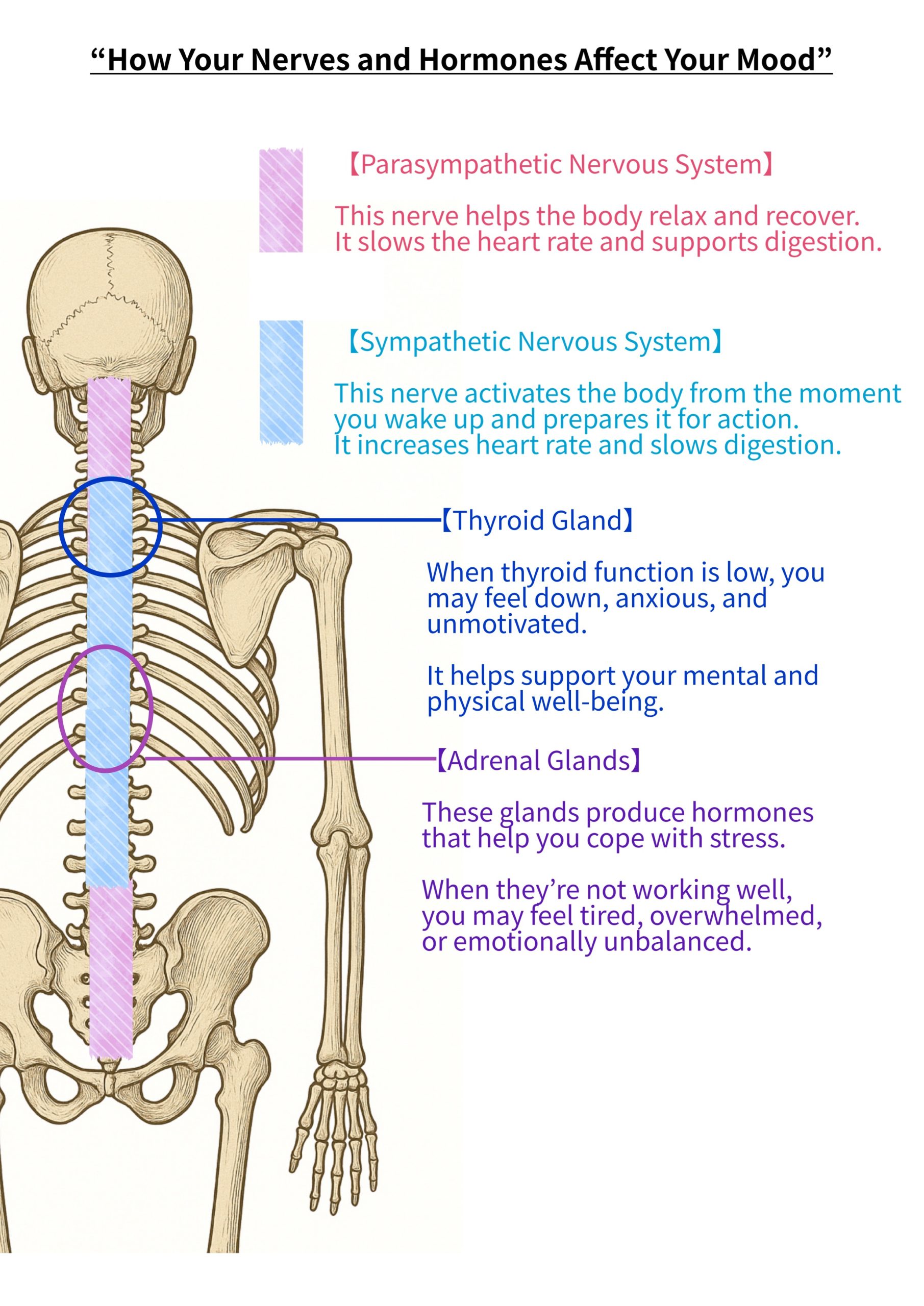Can Anxiety and Thyroid Dysfunction Be Treated Together?
From clinical experience, there is a strong connection between anxiety, panic disorder, mood instability, poor concentration, and low thyroid function.
Chiropractic theory has long recognized regions in the body responsible for emotional regulation — a concept supported by more than a century of research.
Common Mental Health Symptoms
- Frequent anxiety
- Panic attacks
- Low mood or depression
- Lack of concentration
These symptoms are often caused by nerve compression or dysfunction in specific regions of the spine. As illustrated below, there are three key areas involved:

Key Areas Involved
- Sympathetic Nervous System
- Thyroid Hormone Regulation Area
- Adrenal Hormone Regulation Area
All of these systems are closely connected and located along the sympathetic nerve pathways. In practice, it’s often difficult to pinpoint whether improvements are due to better nervous function, thyroid activity, or adrenal recovery.
However, it’s clear that dysfunction in any of them contributes to emotional decline.
The Critical Role of the “Blue Zone”
In nearly all patients presenting with these symptoms, abnormalities are found in the area marked with a blue circle in the spinal region. Specifically:
- Spinal misalignment
- Nerve compression
- Swelling (edema)
- Muscle contraction (tightness)
Targeted correction of this area often leads to clear improvements in mental health, regardless of blood test results.
Thyroid Dysfunction and Mental Health
Western medicine also recognizes that reduced thyroid function can cause:
- Anxiety
- Panic disorders
- Depression or low mood
- Difficulty concentrating
Patients with confirmed thyroid issues frequently visit due to emotional distress. However, even in these cases, spinal adjustments focused on the blue zone result in noticeable improvement. This suggests a strong physical-neurological connection to thyroid-related symptoms.
Future Research Hypothesis
- Nerve compression in the blue zone may lead to emotional decline
- Mental symptoms may appear even without abnormal thyroid lab results if spinal dysfunction exists
- Improving alignment in this zone may also enhance thyroid function
- If addressed early (especially between ages 11–14), it may prevent chronic thyroid dysfunction later in life
If proven, this approach could significantly reduce the growing number of thyroid dysfunction cases while offering new support strategies for physically-induced mental health conditions.




コメント